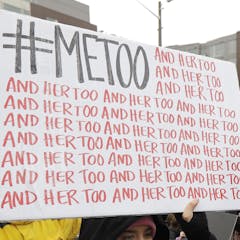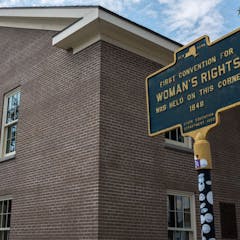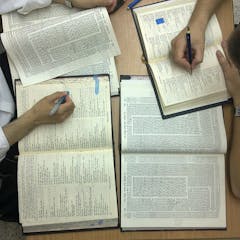
Articles on Religion and women
Displaying 1 - 20 of 30 articles

The iconic image of a witch on a broomstick has apocryphal origins. But whether they could actually fly didn’t stop Christian society from persecuting them.

In minority faith groups that already face hate, women who have experienced harassment sometimes fear bringing negative attention to their community.

Most of the convention’s core organizers were Quakers. The religious movement’s beliefs about men and women’s equality before God has shaped members’ activism for centuries.

People sometimes assume religious traditions’ ideas about gender have always been conservative and unchanging.

In Southern Baptist history, rules on women and sexuality are often entwined. A scholar writes about the first congregation to be expelled from the SBC over LGBTQ+ issues

The lines between family life and Buddhist monasticism are not so ‘either/or’ as they might seem.

Mother figures from faith traditions around the world reflect many different ways of thinking about the divine.

Theosophy and its founders had an outsize impact on Americans’ ideas about spirituality and Asian religions.

Controversy of veils goes back more than a century, a scholar of Iran explains.

The idea of a ‘witch’ was usually female in Western Europe, but not so in Orthodox Russia – partly because of the period’s rigid social hierarchies.

Accused men were protected by the SBC while the women who dared to speak up were called sluts, adulteresses, Jezebels and even agents of Satan. A scholar of evangelicalism writes about this culture.

Views on abortion differ not only among major religious traditions, but within each one.

Rabbi Sally J. Priesand’s ordination by Hebrew Union College-Jewish Institute of Religion opened the doors to hundreds of women becoming rabbis.

As Muslims congregate in their local mosques in communal prayer for Eid, the Women’s Mosque of America, located in Los Angeles, will provide an exclusive religious space for its female congregants.

Women’s contributions to global Christianity are immense, but scholars’ understanding is hampered by limited data.

Judith Kaplan became the first American bat mitzvah in 1922. The Jewish coming-of-age ceremony has become more popular for girls ever since.

Two researchers collected data from Muslim women in 34 countries on their views on wearing sports hijab. Here is what they found.

Three female academics discuss how women are forging new pathways in faith leadership throughout religions that traditionally have been patriarchal.

Religious leadership roles for Orthodox Jewish women are expanding, including community scholars and guides on Jewish law.

LDS leaders still stress that men should ‘preside’ over their families. But in recent years, messages about marriage have stressed more equal partnership.





